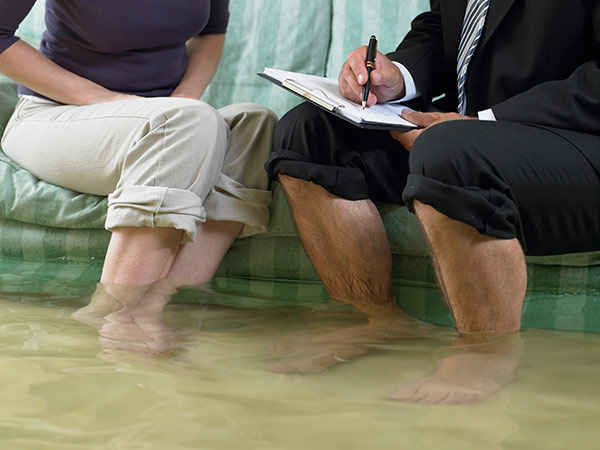 When it comes to large, expensive home appliances, it's easy to leave well enough alone and not mess with things until you notice a problem. With regular checks, you can often spot small problems before they become big ones — let's look at your washing machine for example.
When it comes to large, expensive home appliances, it's easy to leave well enough alone and not mess with things until you notice a problem. With regular checks, you can often spot small problems before they become big ones — let's look at your washing machine for example.
Your washing machine is able to fill with water and clean your clothes thanks to its attached supply hose. The hose is less than an inch wide, but is able to dispense water at a rate of about 650 gallons per hour. Because of how small it is in comparison to how hard it works, it can only last for so long. If left unchecked, the hose can give out, burst, and very quickly flood your home costing thousands of dollars in damage.
Is Checking on a Little Hose Really That Serious?
Absolutely. According to the Insurance Institute for Business & Home Safety (IBHS), washing machine water leaks are one of the top 10 sources of water damage to homes. In a review of 525 washing machine claims, the IBHS discovered that more than half of all claims occurred when the supply hose failed, and the average claim ran over $5,000.
How do You Know if You Need to Replace Your Washing Machine Hose?
There are some tale tell signs your hose is on the outs. Don't risk a flooding home, so check your hose for:
- Age. If your current hose is more than 3 years old it's too old and needs to be replaced.
- Bubbles. If you can see or feel a bubble in your hose, this means something is causing a difference in pressure. That bubble can pop causing the hose to burst which will result in a flood.
- Damage. If there is obvious damage (cracks, unraveling, discoloration, crimps, or kinks), you are in urgent need of a new hose.
- Water. If the hose itself or the connections are leaking or rusted, you'll need to turn the water supply off and contact a plumber to replace it immediately.
If your hose fits any of the descriptions above, visit this page and fill out the form to have it replaced and your peace of mind restored.
How to Shut off the Water Supply to a Washing Machine
Simply look behind your washing machine for the water valve. Some washers have simple lever-style valves which you'll simply flip to the off position, while others have a circular-style vale which you should turn right or clockwise. Turning this off will only turn off the water supply to your washing machine, the rest of your plumbing will be unaffected. To further reduce the risk of flooding, we suggest you make it a habit to turn off your washing machine's water supply between washes, or, at the very least, when you go out of town and leave your home for long periods of time.
We hate to think that homes can flood because of such an innocent oversight. Reduce your home's flood risk by giving us a call at (864) 242-5511 or by scheduling your washing machine supply hose replacement online. And if you haven't already done so, consider membership to our Diamond Club! Diamond Club members get their washing machine hoses and valves tested yearly!

.png)